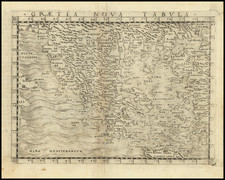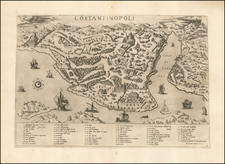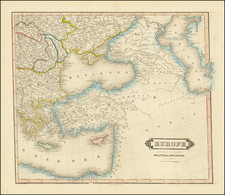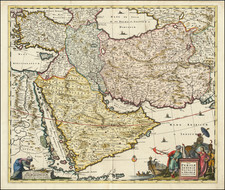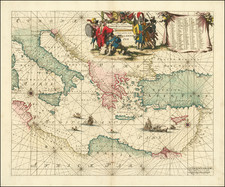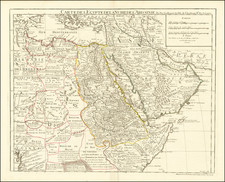The Fall of Constantinople, Only 40 Years After the Event.
15th-century single-page woodcut view of Constantinople produced by Hartmann Schedel in 1493. This historical view, created in Nuremberg, presents a largely imaginary image of the city during a pivotal period, the Fall of Constantinople in 1453.
Hartmann Schedel, a physician, humanist, and book collector of the German Renaissance, is best known for his authorship of the Nuremberg Chronicle, or "Liber Chronicarum," from which this piece is derived. This Chronicle is renowned for its detailed and intricate woodcut illustrations, produced by the workshop of Michael Wolgemut.
This particular woodcut offers a depiction of Constantinople, a critical fulcrum between the East and West, in the throes of the Ottoman siege led by Mehmed the Conqueror. The comprehensive text accompanying the image describes the strategies of the siege, the eventual fall of the city, the death of the Byzantine Emperor Constantine XI Palaiologos, and the subsequent brutalities inflicted upon the city's inhabitants.
The image and its textual context provide a grim reflection on one of history's most significant turning points, marking the end of the Byzantine Empire and the onset of the Ottoman Empire. The capture of Constantinople by the Ottomans was a critical event in world history, influencing the balance of power in the region and leading to significant shifts in trade and cultural exchange.
This work, with its narrative and illustrative historical representation, serves as a valuable resource for those interested in the study of the late Middle Ages and early Modern Period, the rise of the Ottoman Empire, or the history of cartography and printmaking.
Hartmann Schedel (1440-1514) was a physician, book collector, and writer whose most famous work, the Liber Chronicarum (Nuremberg Chronicle), included some of the first printed views of many cities in Europe and across the world.
Schedel was born and died in Nuremberg, but he also traveled for his education. From 1456 to 1463 he lived in Leipzig, where he attended the University of Leipzig and earned his MA. From there he went to Padua, where he earned a Doctor of Medicine in 1466. After university, he worked for a time in Nördlingen and then returned to Nuremberg. In 1482 he was elected a member of the Great Council of Nuremberg.
The Chronicle was published in 1493. Besides this major work, one of Schedel’s most enduring legacies is his magnificent manuscript and printed book collection, one of the largest of the fifteenth century. In 1552, Schedel's grandson, Melchior Schedel, sold about 370 manuscripts and 600 printed works from Hartmann Schedel's library to Johann Jakob Fugger. Fugger later sold his library to Duke Albert V of Bavaria in 1571. This library is now mostly preserved in the Bayerische Staasbibliothek in Munich.
Among the surviving portions of Schedel's library are the records for the publication of the Chronicle, including Schedel's contract with Anton Koberger for the publication of the work and the financing of the work by Sebald Schreyer and Sebastian Kammermeister, as well as the contracts with Wohlgemut and Pleydenwurff for the original artworks and engravings. The collection also includes original manuscript copies of the work in Latin and German.

![[Istanbul] De expugnatione Costantinopolis By Hartmann Schedel](https://storage.googleapis.com/raremaps/img/small/81932.jpg)








